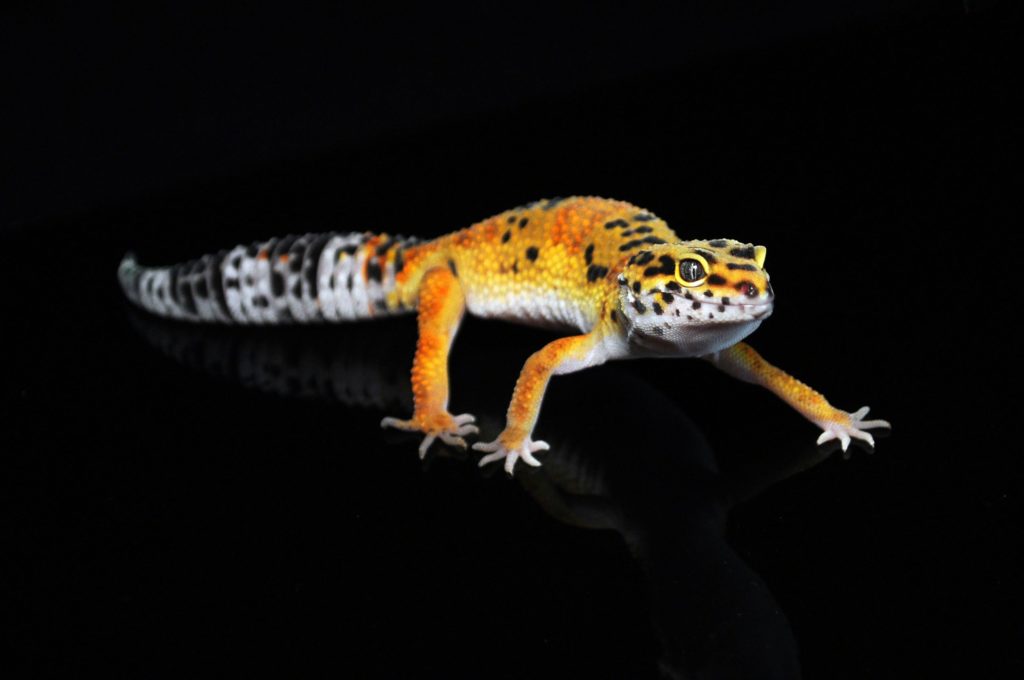A Leopard Gecko tank should be at least 10 gallons, but it depends on their age. Let’s get the lowdown from Frank Cuzzolina of Geeky Gecko Productions…
Last updated on February 14th, 2023 at 12:21 pm
Fully grown Leopard Geckos should be housed in a 20 gallon long tank, and provided with numerous hiding places and climbing opportunities. The dimensions of these tanks are usually 30x12x12 inches (76x30x30cm). “Giant” Leopard Geckos can also thrive in 30 or even 40 gallon long tanks, if confident and feeding well.
In this article, we’ll take a look at the best tank size for Leo’s, but also what they need in their tanks, what accessories they like, and whether you can cohabitate them.
Leopard Gecko tank setup
Decorating a tank for a leopard gecko can be fun and cost effective. I like to style my reptile’s tanks after their natural habitats. Leopard geckos are from a dry desert grassland environment, so think of rocky terrain, low moisture plants and trees, and dry but somewhat compact soil.
With this in mind you can begin to design your reptiles enclosure. There are some reptile hobbyists that are very good at making what is called “Bio-Active” setups for reptiles. These are some-what advanced setups that are meant to function like nature in the wild.
They have everything the outdoors has in one cage, even decomposition insects like isopods, springtails, and more. This allows the keeper to mostly sit back and relax once the set up is made and just watch their gecko secretively enjoy and engage with their natural environment.
One down fall to this is you need to keep all plants and insects alive in the tank to continue decomposing the geckos feces or bacteria. If not, mold will eventually build up possibly putting your gecko at risk for respiratory infection and disease.
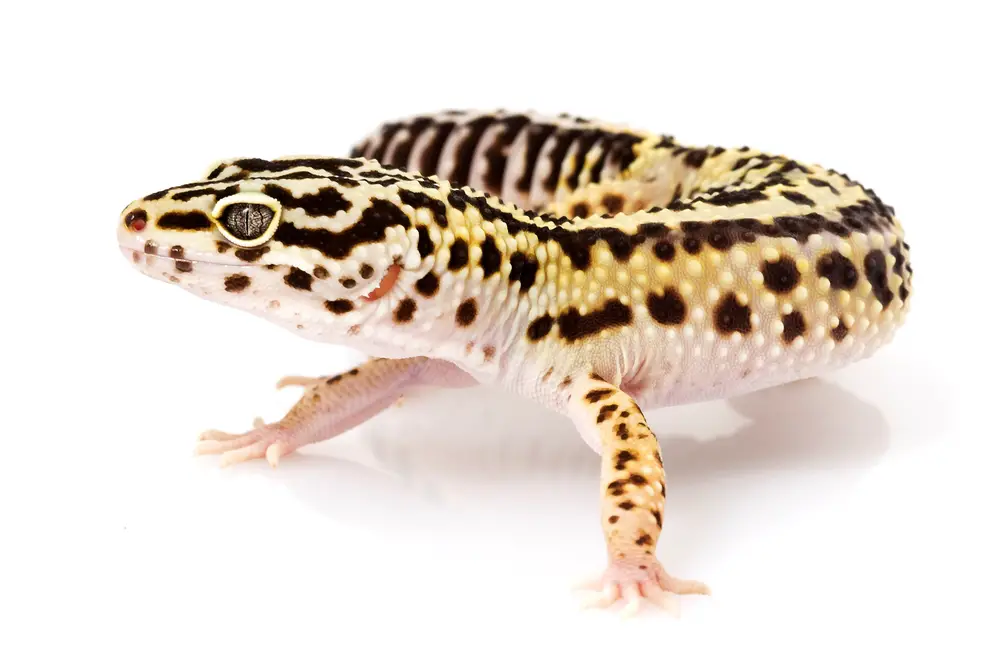
What do you need for a Leopard Gecko?
Traditionally here is what you’ll want to consider decorating your leopard gecko tank with:
- Appropriately sized enclosure
- Dry Hiding place (logs, rocks, caves)
- Humid Hiding place (logs, rocks, caves, plastic Tupperware; filled with eco earth, peat moss, or sphagnum moss)
- Substrate Option (Non Stick Carpet, Newspaper, Paper Towel, Sand/Soil Mixture, Eco Earth)
- Food bowl
- Calcium Dish (if kept separately from food bowl)
- Water Dish
- Climbing branches or rocks (careful they do not crush your gecko)

Leopard Gecko tank size
For baby leopard geckos it is recommended to start them off in a 10 gallon tank. Babies are especially more sensitive to movement and get frightened easily. Because of this you’ll want to try and make sure they have plenty of places to hide.
They enjoy climbing so don’t worry about too much “free” open ground. Feel free to cover the ground with logs, rocks, caves, anything to block the line of sight between you and the gecko. They will eventually grow accustomed to you, however this will help them get settled in the beginning.
Most leopard geckos sold are already healthy and off to a good start. Occasionally you may purchase a leopard gecko that is very young, or small for its age. This may mean the gecko is showing signs of environmental stress, and moving the gecko to a smaller 5 gallon enclosure or 6 quart plastic shoe box tote may help reduce their anxiety and get them back on track.
Juvenile leopard geckos may also be kept in a 10 gallon enclosure with appropriately sized hiding places, decor, and heating/lighting elements. Just remember your gecko may out grow some of it’s old hides, food bowls, water dishes, or lighting elements so you’ll want to keep an eye it.
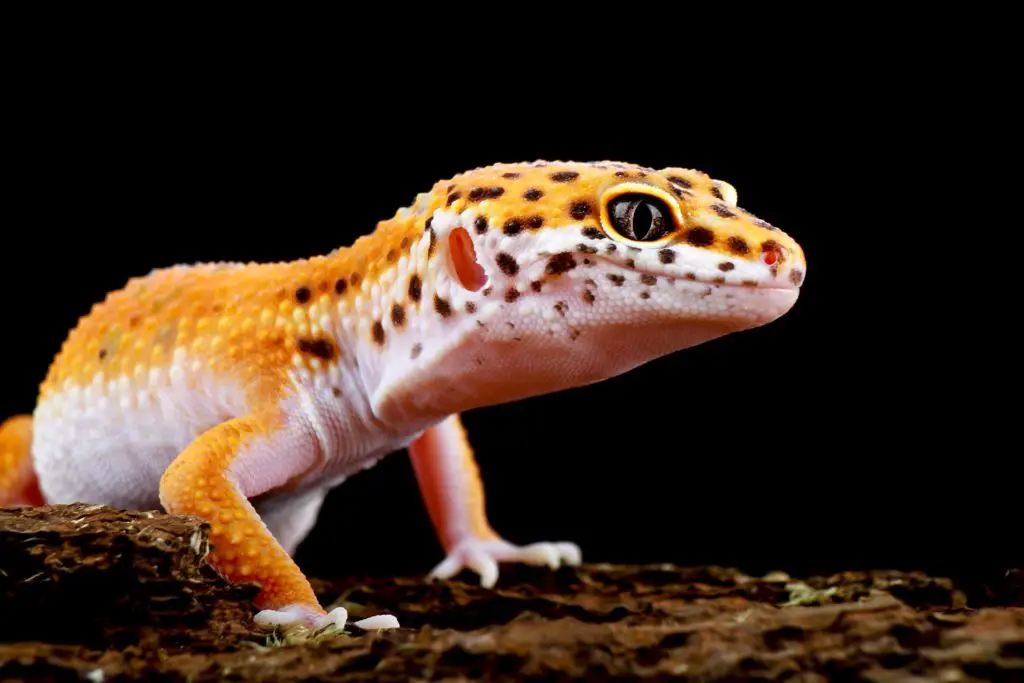
Provide 20 gallon tanks for adults
Leopard geckos do like things tight. They love small, dark, warm places around 80-85 degrees fahrenheit (26-29 Celcius). In fact, these are essential if you want them to be healthy and reach their full lifespan.
But they also enjoy climbing, so try to give your gecko some appropriately sized decor to interact with. They are very active lizards, and you’ll frequently see them wandering about their cages licking and exploring everything.
Adult leopard geckos are usually recommended to have a 20 gallon tank. If you use the space creatively, this will be plenty of space for one gecko. Provide multiple hides, climbing branches, and rocks so that your gecko can best utilize both the vertical and horizontal volume that the tank provides.
Remember, if your gecko can climb, that increases the amount of terrain it can interact with and a 20 gallon long enclosure quickly turns into an exploration paradise for your leopard gecko.

Giant Leopard Gecko tank size
There are some leopard geckos in the hobby that have more length and girth than a traditional leopard gecko.
Normal leopard geckos are around 8-10″ (20-25 cm) and 60-80 grams. Giants can reach lengths of 10-12″ (25-30 cm), and reach weights of 100+ grams, with the largest recorded reaching 170 grams. This is highly unusual however even for giants and an average of 100-120 grams is more expectable.
There is a lot of debate in the leopard gecko community whether this gecko is mutated larger by hybridization, recessive genes, dominant genes, or purely linebred for massive structure, but there is no doubt they do exist and some hobby breeders have taken initiative to focus on breeding all the normal leopard gecko morphs into these giant sizes.
More research will continue to be done on this awesome subset of leopard geckos, but for now they are exactly the same as regular leopard geckos, just with a slightly larger body.
Because of it’s naturally larger size, you may want to consider giving your giant leopard gecko a slightly larger cage than it’s counterpart “normal sized” leopard gecko.
As they grow the size requirements can easily fit within this structure:
- Baby (10 gallon)
- Juvenile (10-20 gallon)
- Sub Adult (20-30 gallon)
- Adult (30-40 gallon)
20 Gallon Leopard Gecko tank
The reason a 20 gallon long leopard gecko tank is the “go-to” size for leopard geckos is because it can house them from birth to adulthood. This makes it extremely easy for you as the keeper to simply upgrade decor as the gecko grows instead of decor and tanks.
It is important to know that most tanks you find online or at general pet stores are designed for fish, so you will often see phrases such as “20 gallon high” or “20 gallon long.” Just know that when refering to leopard geckos, you will want to purchase for length over height.
Some companies have now started making reptile specific tanks with front opening doors and even list the species that the tank is great for on the outside of the box.
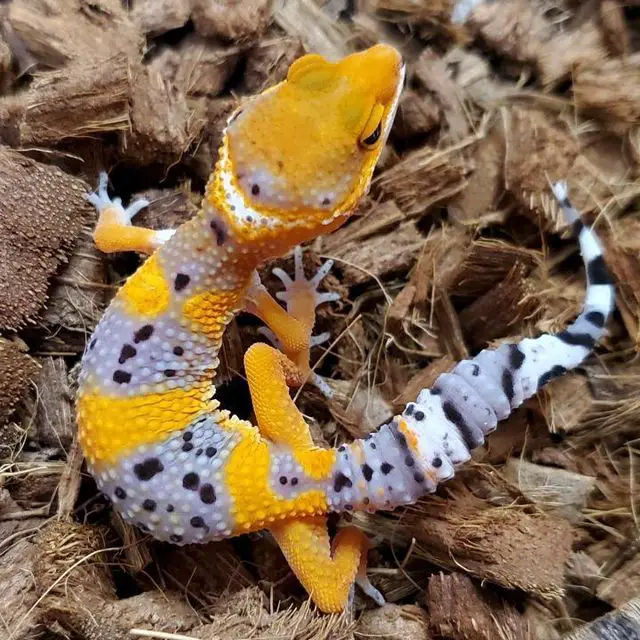
Is a 10 gallon tank big enough for a Leopard Gecko?
On the technical side, a 10 gallon tank will be enough room for one adult leopard gecko, especailly if you utilize the height for climbing branches, caves, rocks, etc. This is often a controversial question with many believing a 10 gallon tank is too small for an adult leopard gecko, and many believing it is perfectly fine.
I would study the behaviour of the animal to make your personal conclusion. Is it eating fine, does it have healthy body weight retention, is it happily basking and using the different parts of it’s tank?
Much of this hobby is observational, so I always encourage people to study their geckos in each habitat/home they find themseleves in because sometimes minor changes in air pressure, humidity, and overall ambient room temperature can cause for different reactions from the same species located in different areas.
Is a 40 gallon tank too big for a Leopard Gecko?
On the opposite parallel, many people believe a 40 gallon is too big for a leopard gecko. As long as the leopard gecko has all it needs, both a 10 and 40 gallon aquarium can work. Here is what you want to look out for, however.
In a 10 gallon aquarium you need to be concerned about using too high wattage of a heat bulb that causes for overheating, since it is a very small cage. On the opposite side of things, in a 40 gallon aqaurium, you need to be concerned with using too low wattage of a heat bulb since there is much more free air space to heat/cool.
Often times in a 40 gallon tank, if the heat bulb or item is too small, the heat will quickly dissipate and your leopard gecko may be left with too cool a hot spot.
Since a 40 gallon is such a large enclosure compared to the body size of the gecko I would also make sure you give the gecko lots of hiding places and braches to make it feel like it can stay hidden and not be exposed to line of sight by predators.
Leopard geckos in captivity usually do not have this fear, however a few may express it from time to time and when they do, moving them to smaller cages or making sure there is lots of decor are two great options to make them feel safe again.
Do Leopard Geckos get lonely?
The question of companionship in leopard geckos is a very interesting topic. Leopard geckos if kept together will often group up in hides, especially babies. We cannot tell if this is because they like each others company or gravitate to one another for the feeling of safety or thermal regulation.
It would be interesting if someone tested these theories out one day but many different variables and scenarios would need to be tested. For now, it is commonly accepted that babies up to 3 months old can live together in pairs or groups just fine, granted that they have enough space to get away from one another.
After housing hundreds of babies in pairs in 6 qt. containers until they reach 3 months of age myself, I can tell you I have never seen agressive behavior under those conditions. However, that does not mean it cannot happen, so observing your animals under any condition you put them in and making changes is always recommeneded.
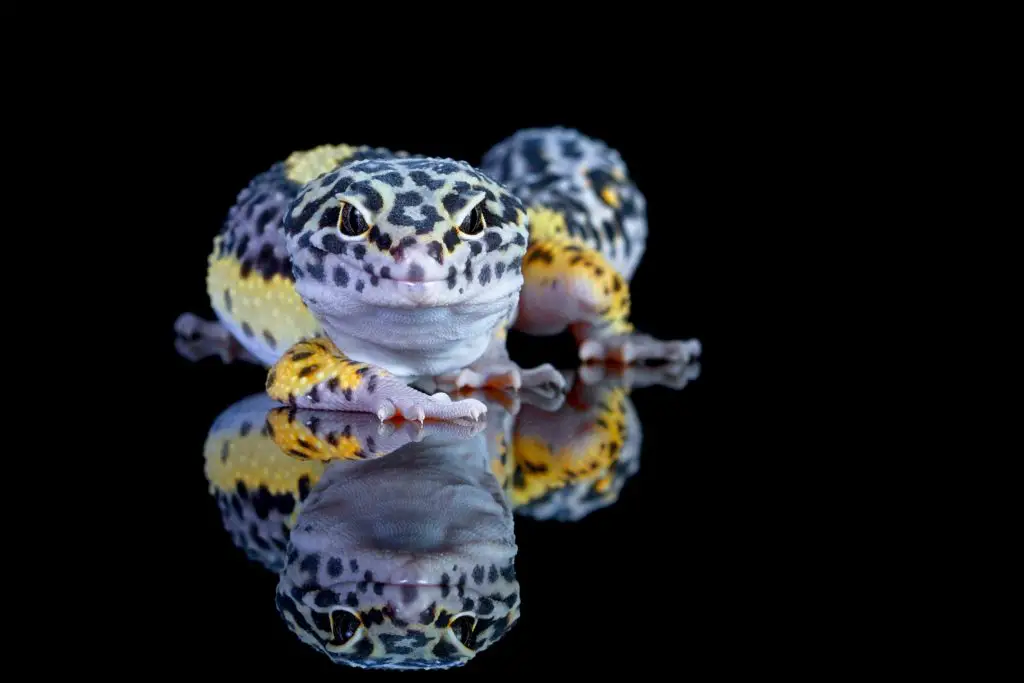
Overcrowding can cause issues
If babies are over crowded however they may start to nip at each others toes and tails because it is my observation that sometimes babies do not recogize that another baby is NOT a threat and they will scream, bite, or run away from the sight of another baby.
Usually this behaviour is triggered by a human contact first, putting them on alert, and making them attack anything that moves. In the United States, we actaully have a distant cousin of the leopard gecko in the wild called Coleonyx Variegatus.
I have studied this species in the wild herping locally and found that most appear to be solitary in habitation but on occasion I will find them together in holes or under rocks, branches, or trash.
Thier behaviour, diet, and environtment is so similar to leopard geckos that I keep, study, and breed two large captive grown colonies myself.
Can you cohabit Leopard Geckos?
In conclusion, if you stick to these guidelines you will be ok:
Babies – 3 months (cohabitation ok with proper spacing)
Juveniles – 6 months (would not cohabitate until gender is 100% known)
Adult females – (ok to cohabitate if kept in large enough enclosure)
One male with multiple females – (ok to cohabitate if kept in large enough enclosure)
Two or more males – (never cohabitate)
These are general guidelines, especailly during breeding season we have heard stories, and seen pictures of males hurting females badly if kept together and females hurting other females if kept together. This is why I prefer to give each of my geckos older than 3 months their own small habitat and this has worked very well for us.
Leopard Gecko tank accessories
Necessary accessories for leoaprd geckos would include at minimum 1 humid hide where they can shed their skin and lay their eggs (if female), one approriately sized heating element (heat bulbs, mats, emmitters), substrate (natural, paper, non stick carpet), food bowl (with calcium/supplements), and a water dish.
Unnescessary accessories may include reptile hammocks, feeding ledges, extra hides, climbing braches, and toys (balls, bells, strings, etc).
Although I mentioned extra hides and climbing branches as unesscessary, I do suggest that you do have those in the cage with your gecko, however it is not necessarry to the geckos survival, it simply gives them options of feeling safe, and interacting with their environment.
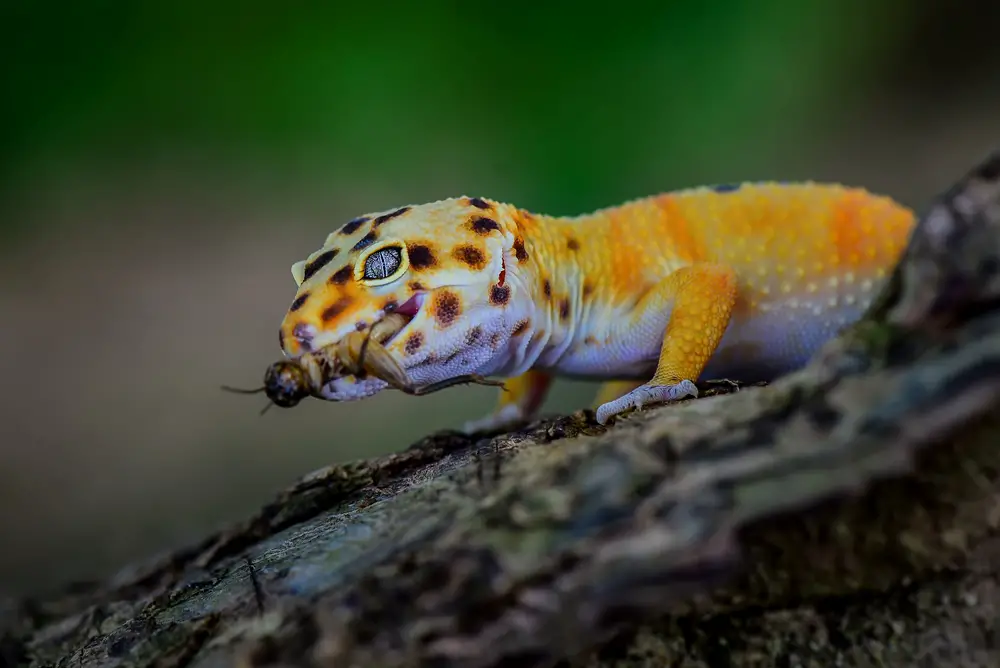
What decorations do Leopard Geckos like?
Leopard geckos love to have small dark warm hides 80-85 degreees (26-29 Celcius), branches or rocks to climb on, a water dish, and calcium/supplement bowl.
They are fairly active reptiles and you will see them exploring their cage multiple times a day, so the more accessories you have, the more they use their brain to figure things out and problem solve.
They also have been observed many times lapping up fresh water when provided in a bowl and also licking up calicum/vitamin powder from their supplement dish.
Leopard Gecko setup kits
Leoaprd gecko kits are often a good way for beginners to get everything they “need” in one spot. This can be more convenient and easier for beginners just starting out.
Sometimes these kits may need a little tweaking as time goes on, for exmaple the heat and humidity gauges may need to be upgraded, and the lighting may need to be thoroughly tested to provide the correct temperature zones for the geckos.
Newer keepers may not know how to move the bulb around or be aware at all what temperature zones to create so prior knowledge of the geckos requirements is recommended to be researched before buying the kit.
The kit does not teach you how to care for the animal, it simply provides you what you need to care for the animal, this is why I still suggeest you research ahead of time and then use that knowledge to choose, and put your kit together.

Are they worth it?
In my experience most current kits on the market from large name brands give you unnecessary items in your kit or items that have been proven to offer problems to your gecko.
An example of this is the provision of extra bulbs (night/day), and providing you with only one option of substrate that may not be the best for your leopard gecko (pure loose sand).
The reason sand may not be the best option for your leopard gecko, especially babies, is there have been a signifcant amount of documented cases of impaction leading to death in leopard geckos on pure loose sand, especially calicum sand (most commonly provided in reptile kits and at pet stores).
I also do not know if all leoaprd gecko kits include a humid substrate for your humid hide, so you’ll want to make sure that is in there.
In conclusion, leopard gecko kits CAN be excellent to help a newer keeper get started, but reseearch first what you need (temperature, humidity, hides, supplments, substrate), and then make sure the kit offers you everything you need.
There are some newer reptile specific companies that are starting to put together really great starter options for reptile keepers, but they are not as common as the big box chain companies at the moment, so most likely what you will see in stores currently, is the older based kits that may not be best tailored to the species that the box is advertising to be used for.
How big should a Leopard Gecko tank be? Summary
For regular Leopard Geckos:
| Very small/shy babies | Healthy babies | Subadults/adults |
| 5 gallon | 10 gallon | 20 gallon |
For Giant Leopard Geckos:
| Babies | Juveniles | Subadults | Adults |
| 10 gallon | 10-20 gallon | 20-30 gallon | 30-40 gallon |
We hope you’ve enjoyed this article by Frank! If you want to learn more about Leopard Geckos, why not check out his Youtube channel: Geeky Gecko Productions. Alternatively, you can read his Leopard Gecko Husbandry Guide.

